4.2 Cycladic Culture
The Cycladic hosted a civilization that excited modern artists with its abstract looking figures. Of the three major Bronze Age Civilizations, this one is the most difficult to tie directly to the Greeks. There is less known about this culture than the others. It is clear, however, that they traded with both the Minoan and the Mycenaean cultures so there is likely more inter-cultural influence than can be proven. It is certainly possible that this simple abstract style was later joined with the Egyptian tendency toward simplification of form seen in the Archaic Period. In any case, some of the subject matter and the emblematic style are clearly present in the later, Geometric sculpture.
Note that the female figures, mostly found in graves are frontal, nude, formal and stiff. They are beautiful in their simplicity but in fact they would have been brightly painted. These figures were clearly meant to be viewed from the front as they have nearly no depth.
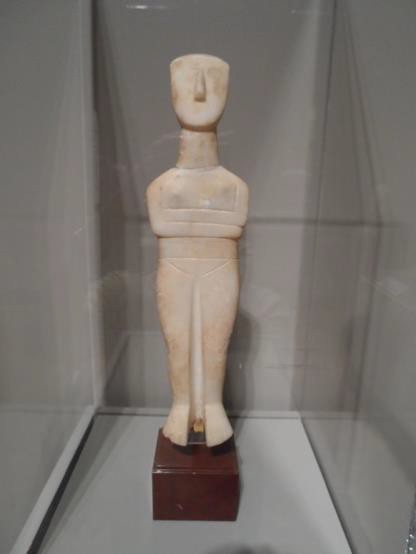
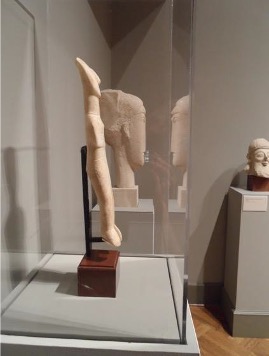
Note the simplicity of the figure’s facial features. Many of her other features are indicated only by incised, or shallowly carved, lines on the figure.
The male figures, on the other hand, tend to be made of rounded shapes and are designed to be viewed from more than one angle. Unfortunately, little of what has been found on these islands remains associated with its context. These figures were extremely popular in the 1800s, when amateur archeologists unearthed artifacts for sale on the art market. Their influence can be seen in modernist art.
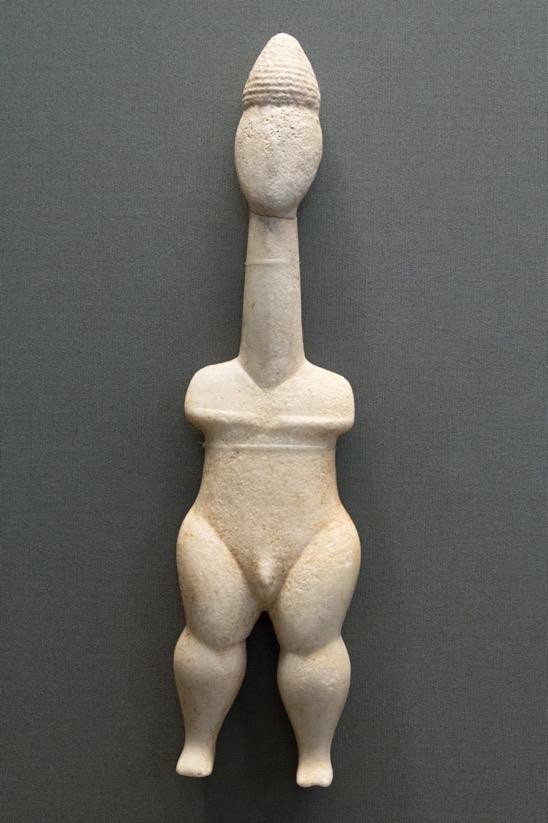
The figure in the image above is clearly male, however, there is little more than can be said for certain. It has been suggested that the incised portion at the top may represent coifed hair or a hat of some sort. The more common male figures are depicted playing musical instruments. The harp is most often the instrument that is shown. The conical incised head may indicate elaborate coiffure or bonnet.
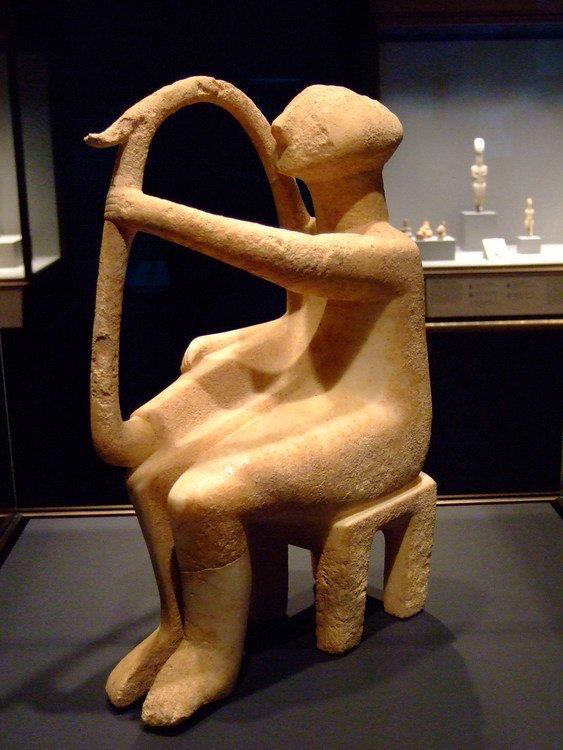
Above is one of many Cycladic male figures depicted playing a musical instrument. This is perhaps the strongest evidence of Cretan influence on later Greek culture. These figures strongly resemble male figures of the later Geometric style. That these are so common in Cycladic culture seems to be an indication that music was as important to the Cycladic culture as it would be to the Greeks of the Geometric Period. The flute is another instrument that appears in Cycladic sculpture. The double flute or aulos that became important to fifth century Athenian theatre is depicted in one of these Ancient sculptures. Again, there are clear connections between these early people and their later cultural, if not genetic, descendants.
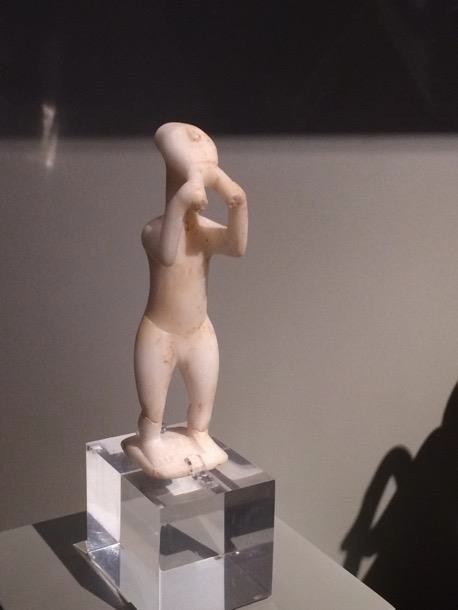
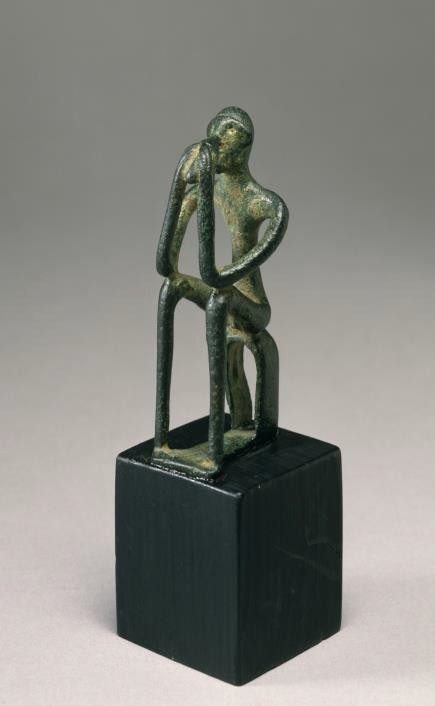
Although the materials are different, the simplicity of form in the Geometric period (c. 900-750 BCE.) closely resembles that of the Cycladic period (c. 2800-2000BCE.) It is impossible to say if this figure is playing a flute or drinking from a vessel. In either case, the figure is clearly emblematic, rather than realistic.
Among the islands was a large and prosperous one called, Thera. Many scholars believe that this could have been the seed for the stories of Atlantis, the legendary, highly advanced civilization that sank into the sea. In any case, much of the island was blown away when the volcano that had once formed it exploded, causing a tidal wave that affected everything within hundreds of miles.
Watch the short video (5.35) and discover some important remnants of Cycladic culture found on Thera.
If you cannot view the video above, use this link: https://smarthistory.org/thera/
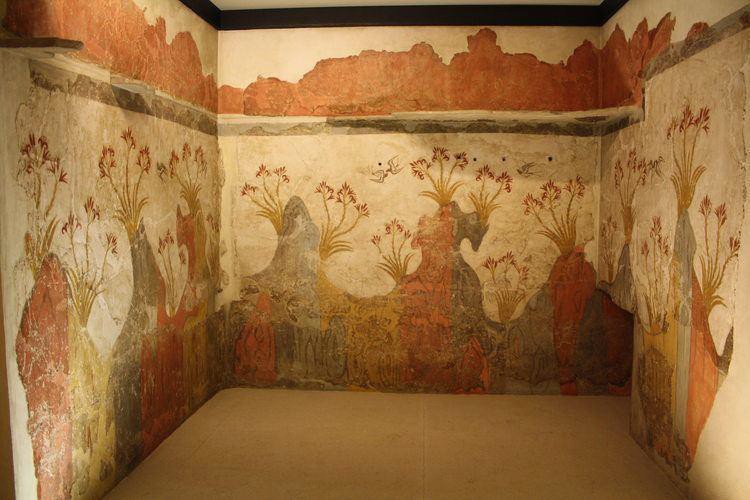
Above is one of the landscapes mentioned in the digital clip. As mentioned in that clip, this is one of the earliest recorded landscapes and it is in true fresco (see clip for description) form. This is the only wall-painting of Akrotiri that was found in situ, (in its original place) covering three walls of the same room. It depicts the rocky Theran landscape before the volcanic eruption; clusters of red lilies with yellow stems dominate the red and gray volcanic formations, while swallows swoop above, alone or in flirtatious pairs, animating the scene and symbolically announcing nature’s annual rebirth.
The opulent use of colors—black, white, red, yellow and blue—and the lively movement created by the lilies dancing in the wind and swallows at play, allow for the attribution of this composition to the painter of the “Crocus Gatherers” fresco. The room had a shelf high on the wall and an opening for communicating with a smaller room to its north.
This level of abstraction is later seen in Mycenaean pottery and may well have been influenced by the Cycladic culture, which traded with Mycenae. Because the Cyclades are so close to Crete and because the Minoans may have controlled those islands it is hard to say which culture had the most impact on later art. The ideas and styles seen in both Cycladic and Minoan art show up later in the Mycenaean and Geometric art styles.
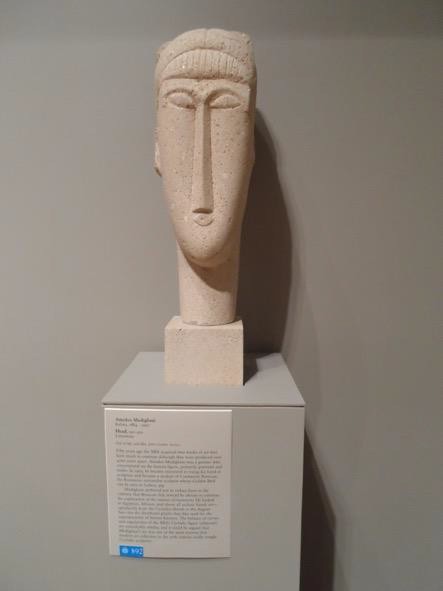
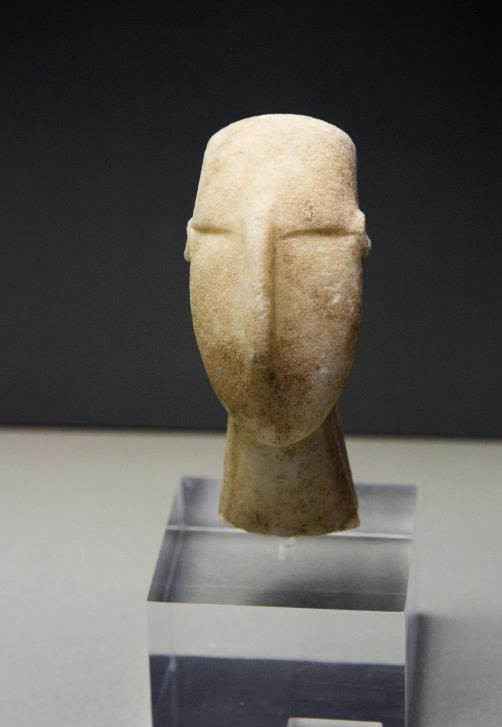
There is no doubt, however, about the impact that Cycladic art had on modern artists such as Modigliani, because many modernists consciously turned to Cycladic and African art for their inspiration. Notice how similar the emblematic faces of the Cycladic, Modern and Geometric period sculptures are. This geometric style changes drastically when Humanism is introduced in the Greek world. Until that time, these emblematic images abounded.
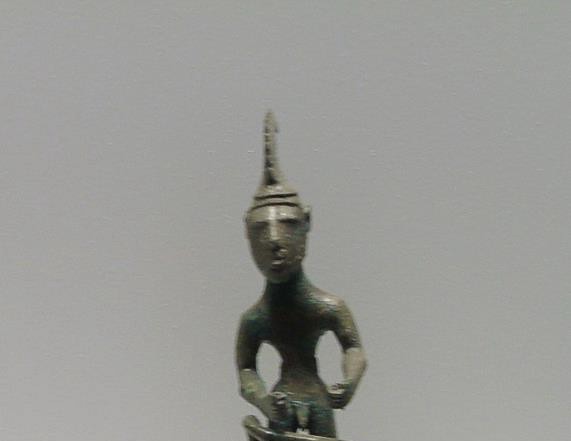
Early Cycladic pottery was often covered in geometric designs, a practice that would be repeated during the Geometric period on mainland Greece. Later Cycladic pottery, like sculpture and wall frescoes, was often decorated with simplified, abstracted images of nature. Below note the birds and foliage decorating the second vessel.
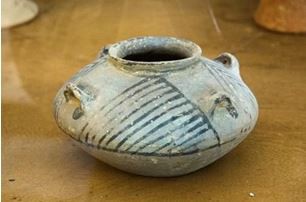
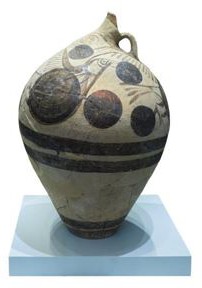
The Cycladic love of music, styles of pottery and sculpture, and approaches to decoration all reappear in later Greek art. The cultural, if not genetic, descendants of the people that inhabited the Cyclades during the Bronze Age, benefitted from these early artists and craft people. To see how these ideas were shared and adapted by other Bronze Age cultures, read on to the sections on the Minoans and the people of the Mycenaean culture. They too left their mark on the people that followed them.
References:
1. Cycladic female figure by Kathleen J. Hartman is licensed under CC BY-NC 4.0.
2. Cycladic female figure, side view by Kathleen J. Hartman is licensed under CC BY-NC 4.0.
3. “Cycladic male” by Zde is licensed under [CC BY-SA 4.0 (https://creativecommons.org/licenses/by-sa/4.0)] https://commons.wikimedia.org/wiki/File:Cycladic_figurine,_male,_Plastiras_variety,_NAMA_3912,_190927.jpg.
4. Mark Cartwright. Harp Player CC BY-NC-SA. Ancient History Encyclopedia. Ancient History Encyclopedia, 17 Nov 2024. Web.23 Nov 2019.
5. Photo courtesy of Kathleen J. Hartman licensed under CC BY-NC 4.0 License.
6. Photo by Walters Art Museum [Public domain] https://commons.wikimedia.org/wiki/File:Greek_-_Seated_Male_Figure_-
_Walters_54789_-_View_A.jpg Walters Art Museum, Go to Smarthistory.org and search for “Ancient Aegean” then “Cycladic” then “Akrotiri, Thera”.
7. Cartwright, Mark. CCBY-NC-SA. Ancient History Encyclopedia. Ancient History Encyclopedia, 17 Nov 2024. Web.23 Nov 2019.
8. Photo courtesy of Kathleen J. Hartman. CC BY-NC 4.0 License
9. Head of small idol. Antiparos, early Bronze Age. National Archaeological Museum of Athens, Photo by Zde, CC BY-SA 3.0, https://commons.wikimedia.org/wiki/File:Head_of_idol_NAMA_080726.jpg
10. Ancient Greek Helmeted Charioteer. C. 775-750. Dorieo [CC BY-SA 4.0 (https://creativecommons.org/licenses/by- sa/4.0)]https://commons.wikimedia.org/wiki/File:Ancient_Greek_helmeted_charioteer_-_NAMA_inv._6190.JPG
11. Early Cycladic pottery.Zde [CC BY-SA 4.0 (https://creativecommons.org/licenses/by-sa/4.0)] https://commons.wikimedia.org/wiki/File:Cycladic_pottery,_decor,_3200-2300_BC,_AM_Apeiranthos,_143697.jpg
12. Heraklion Archaeological Museum [CC0] https://commons.wikimedia.org/wiki/File:Cycladic_ewer_archmus_Heraklion.jpg

